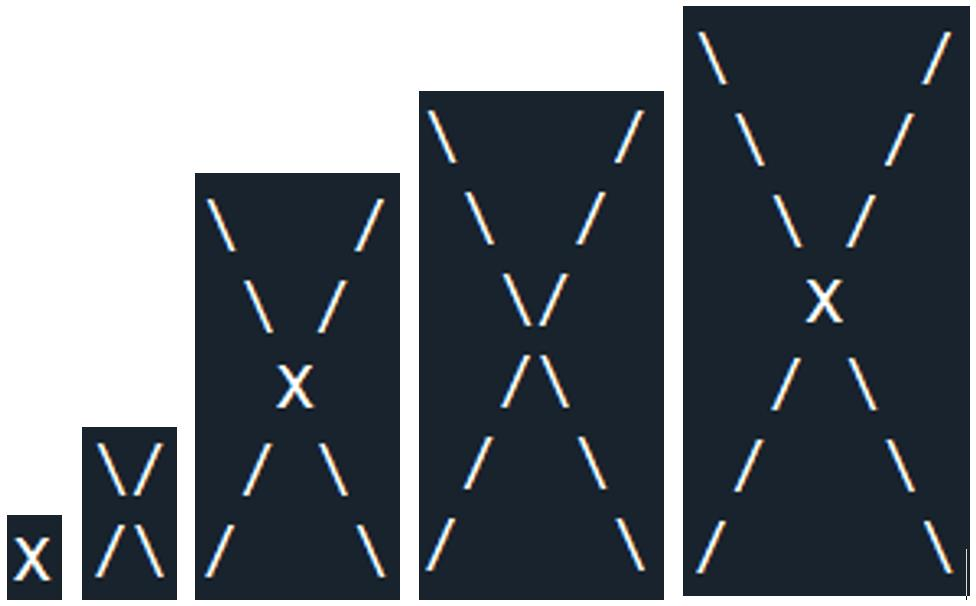Homework Assignment 2
234128 – Introduction to Computing with Python
Spring Semester, 2023
Assignment 2
Loops | Lists | Strings
Instructions:
Required submission files:
Question 1: hw2q1.py
Write a program that prints the acronym of a sentence.
编写一个程序,打印一个句子的缩写词。
The words ‘with’, ‘and’, ‘of’, ‘to’ must be ignored.
这句话的意思是:必须忽略单词“with”、“and”、“of”和“to”。
Examples:
| Input | Output |
|---|---|
Guangdong Technion Israel Institute of Technology | GTIIT |
Mathematics with Computer Science | MCS |
laughing out loud | lol |
be right back | brb |
yǒng yuǎn de shén | yyds |
Note: The program doesn’t print anything other than the resulting string (no input prompts).
注意:该程序除了输出结果字符串以外不会打印任何其他内容(没有输入提示)。
Answer
def acronym(sentence):
ignored_words = {'with', 'and', 'of', 'to'}
words = sentence.split()
acronym = ''.join([word[0] for word in words if word.lower() not in ignored_words])
print(acronym)
# Test the function with example sentences
acronym("Guangdong Technion Israel Institute of Technology")
acronym("Mathematics with Computer Science")
acronym("laughing out loud")
acronym("be right back")
acronym("yǒng yuǎn de shén")# Step 1: Define the function
def acronym(sentence):
# Step 2: Define the set of ignored words
ignored_words = {'with', 'and', 'of', 'to'}
# Step 3: Split the sentence into words
words = sentence.split()
# Step 4: Iterate through the words, taking the first character of each word that is not in the ignored_words set
acronym_characters = [word[0] for word in words if word.lower() not in ignored_words]
# Step 5: Join the characters together to form the acronym
acronym = ''.join(acronym_characters)
# Step 6: Print the resulting acronym
print(acronym)
# Test the function with example sentences
acronym("Guangdong Technion Israel Institute of Technology")
acronym("Mathematics with Computer Science")
acronym("laughing out loud")
acronym("be right back")
acronym("yǒng yuǎn de shén")Question 2: hw2q2.py
Write a program that counts the number of English characters in a string and prints the result as output.
编写一个程序,计算一个字符串中英文字符的数量,并将结果打印输出。
Requirement: Using any string methods is not allowed!
要求:不允许使用任何字符串方法!
Examples:
| Input String | Output |
|---|---|
Hello World | 10 characters |
H3110 W0r!d | 4 characters |
$h@nt0u | 4 characters |
Two @pple$, 1 Banana | 13 characters |
def is_english_char(char):
return ('A' <= char <= 'Z') or ('a' <= char <= 'z')
def count_english_characters(input_string):
count = 0
for char in input_string:
if is_english_char(char):
count += 1
return count
# Test cases
test_strings = [
"Hello World",
"H3110 W0r!d",
"$h@nt0u",
"Two @pple$, 1 Banana",
]
for string in test_strings:
print(f"'{string}': {count_english_characters(string)} characters")def count_english_characters(input_string):
count = 0
for char in input_string:
if ('A' <= char <= 'Z') or ('a' <= char <= 'z'):
count += 1
return count
# 测试用例
test_strings = [
"Hello World",
"H3110 W0r!d",
"$h@nt0u",
"Two @pple$, 1 Banana",
]
for string in test_strings:
print(f"'{string}': {count_english_characters(string)} characters")def count_english_characters(input_string):
alphabet = 'abcdefghijklmnopqrstuvwxyzABCDEFGHIJKLMNOPQRSTUVWXYZ'
word_count = 0
for char in input_string:
if char in alphabet:
word_count += 1Question 3: hw2q3.py
Write a function: get_pairs(L1, L2)
The function gets two lists L1, L2 with equal length. The function returns a list of pairs of items from L1 and L2. Each pair is a list.
Requirements: Must use list comprehension. The function body is limited to one line of code.
Examples:
| Function Call | Return |
|---|---|
get_pairs([1, 2, 3],['a', 'b', 'c']) | [[1, 'a'], [2, 'b'], [3, 'c']] |
get_pairs(['x', 'x'], ['o', 'o']) | get_pairs(['x', 'x'], ['o', 'o']) |
Here's the function definition:
def get_pairs(L1, L2):
return [[x, y] for x, y in zip(L1, L2)]Examples:
print(get_pairs([1, 2, 3], ['a', 'b', 'c'])) # [[1, 'a'], [2, 'b'], [3, 'c']]
print(get_pairs(['x', 'x'], ['o', 'o'])) # [['x', 'o'], ['x', 'o']]Question 4: hw2q4.py
Write a function: cross(n)
The function prints a picture of an n x n cross. The cross consists of two diagonal lines. The lines should be made of a forward-slash ‘/’ and back-slash ‘\’. When n is an odd number, use ‘X’ at the center of the cross. See attached examples in the zip file.
该函数打印出一个的十字形图片。该十字形由两条对角线组成。这两条对角线应该由斜杠‘
/’和反斜杠‘\’组成。当为奇数时,在十字形的中心使用‘X’。请参考附带的zip文件中的示例。

Notes:
- For odd values of n, notice the ‘X’ in the center is uppercase.
对于奇数n的情况,请注意中心的“X”是大写的。
- Recall that to print a single back slash in Python you need to use print(‘\’).
记住,在Python中打印一个单独的反斜杠需要使用print('\')。
Answer
def cross(n):
# 如果 n 为 1,直接打印 "X" 并返回
if n == 1:
print("X")
else:
# 计算中点的位置
mid = n // 2
# 遍历 n 行
for i in range(n):
# 如果行号 i 小于中点,打印上半部分的斜线
if i < mid:
# " " * i 在行首打印空格
# "\\" 打印反斜杠
# " " * (n - 2 * i - 2) 在两个斜线之间打印空格
# "/" 打印正斜杠
print(" " * i + "\\" + " " * (n - 2 * i - 2) + "/")
# 如果行号 i 等于中点且 n 为奇数,打印 "X"
elif i == mid and n % 2 != 0:
print(" " * i + "X")
# 否则,打印下半部分的斜线
else:
# " " * (n - i - 1) 在行首打印空格
# "/" 打印正斜杠
# " " * (2 * i - n) 在两个斜线之间打印空格
# "\\" 打印反斜杠
print(" " * (n - i - 1) + "/" + " " * (2 * i - n) + "\\")思路概括如下:
- 首先,检查特殊情况 n 等于 1,直接打印 "X"。
- 对于其他情况,计算中点位置。
- 遍历 n 行,根据行号 i 和中点位置决定如何打印每一行。
- 如果行号小于中点,则打印上半部分的斜线。
- 如果行号等于中点且 n 为奇数,则打印 "X"。
- 否则,打印下半部分的斜线。
当然可以。让我们一步步分析这个题目,逐步理解它,并逐步演示如何得出结果。
题目要求编写一个函数 cross(n),它接受一个整数 n 作为输入参数,并打印一个 n x n 的十字图案,十字由两条对角线组成,分别使用正斜杠 '/' 和反斜杠 '\' 表示。如果 n 为奇数,中心点用大写字母 'X' 表示。
首先,我们需要根据输入的 n 值来确定如何绘制图案。我们可以将问题分解为以下几个部分:
- 特殊情况:n 等于 1。
- 对于其他 n 值,我们需要找到中点。
- 根据行号 i 和中点位置来决定如何打印每一行。
现在,让我们一步步演示如何使用示例 cross(5) 来完成这个过程。
示例:cross(5)
特殊情况:n 等于 1。在这个示例中,n 等于 5,因此我们不需要处理这个特殊情况。
对于其他 n 值,我们需要找到中点。在这个示例中,n 等于 5,所以中点是
n // 2,即 2。根据行号 i 和中点位置来决定如何打印每一行。我们需要遍历 n 行(在这个示例中是 5 行),并根据行号 i 和中点位置决定如何打印每一行。
这些表达式是根据行号 i 和输入值 n 计算每一行要打印的字符。让我们逐一分析这些表达式以了解它们的来源。
" " * i + "\\" + " " * (n - 2 * i - 2) + "/"这个表达式用于打印上半部分的斜线。对于这部分,我们需要根据行号 i 在每行的开头和斜线之间打印适当数量的空格。这可以通过
" " * i实现,其中 i 是行号。然后,我们需要打印反斜杠 "\",表示上半部分斜线的开始。
接下来,我们需要在两条斜线之间添加适当数量的空格。观察上半部分的斜线,我们可以发现,随着 i 的增加,中间的空格数呈现递减的趋势。为了计算中间空格的数量,我们可以使用
(n - 2 * i - 2)。这个表达式表示从总长度 n 中减去两倍的行号 i,再减去 2。这样就可以得到中间空格的数量。最后,我们需要打印正斜杠 "/",表示上半部分斜线的结束。
" " * i + "X"这个表达式用于打印奇数 n 值时的中心点 "X"。在这种情况下,我们需要在每行的开头打印适当数量的空格,这可以通过
" " * i实现,其中 i 是行号。然后,我们需要打印 "X" 作为中心点。
" " * (n - i - 1) + "/" + " " * (2 * i - n) + "\\"这个表达式用于打印下半部分的斜线。对于这部分,我们需要在每行的开头打印适当数量的空格。观察下半部分的斜线,我们可以发现空格数随着行号 i 的增加而减少。为了计算这些空格的数量,我们可以使用
(n - i - 1)。这个表达式表示从总长度 n 中减去行号 i,再减去 1。然后,我们需要打印正斜杠 "/",表示下半部分斜线的开始。
接下来,我们需要在两条斜线之间添加适当数量的空格。观察下半部分的斜线,我们可以发现,随着 i 的增加,中间的空格数呈现递增的趋势。为了计算中间空格的数量,我们可以使用
(2 * i - n)。这个表达式表示两倍的行号 i 减去总长度 n。
公众号:AI悦创【二维码】

AI悦创·编程一对一
AI悦创·推出辅导班啦,包括「Python 语言辅导班、C++ 辅导班、java 辅导班、算法/数据结构辅导班、少儿编程、pygame 游戏开发、Web、Linux」,全部都是一对一教学:一对一辅导 + 一对一答疑 + 布置作业 + 项目实践等。当然,还有线下线上摄影课程、Photoshop、Premiere 一对一教学、QQ、微信在线,随时响应!微信:Jiabcdefh
C++ 信息奥赛题解,长期更新!长期招收一对一中小学信息奥赛集训,莆田、厦门地区有机会线下上门,其他地区线上。微信:Jiabcdefh
方法一:QQ
方法二:微信:Jiabcdefh

更新日志
1c35a-于aed17-于21651-于bffa5-于